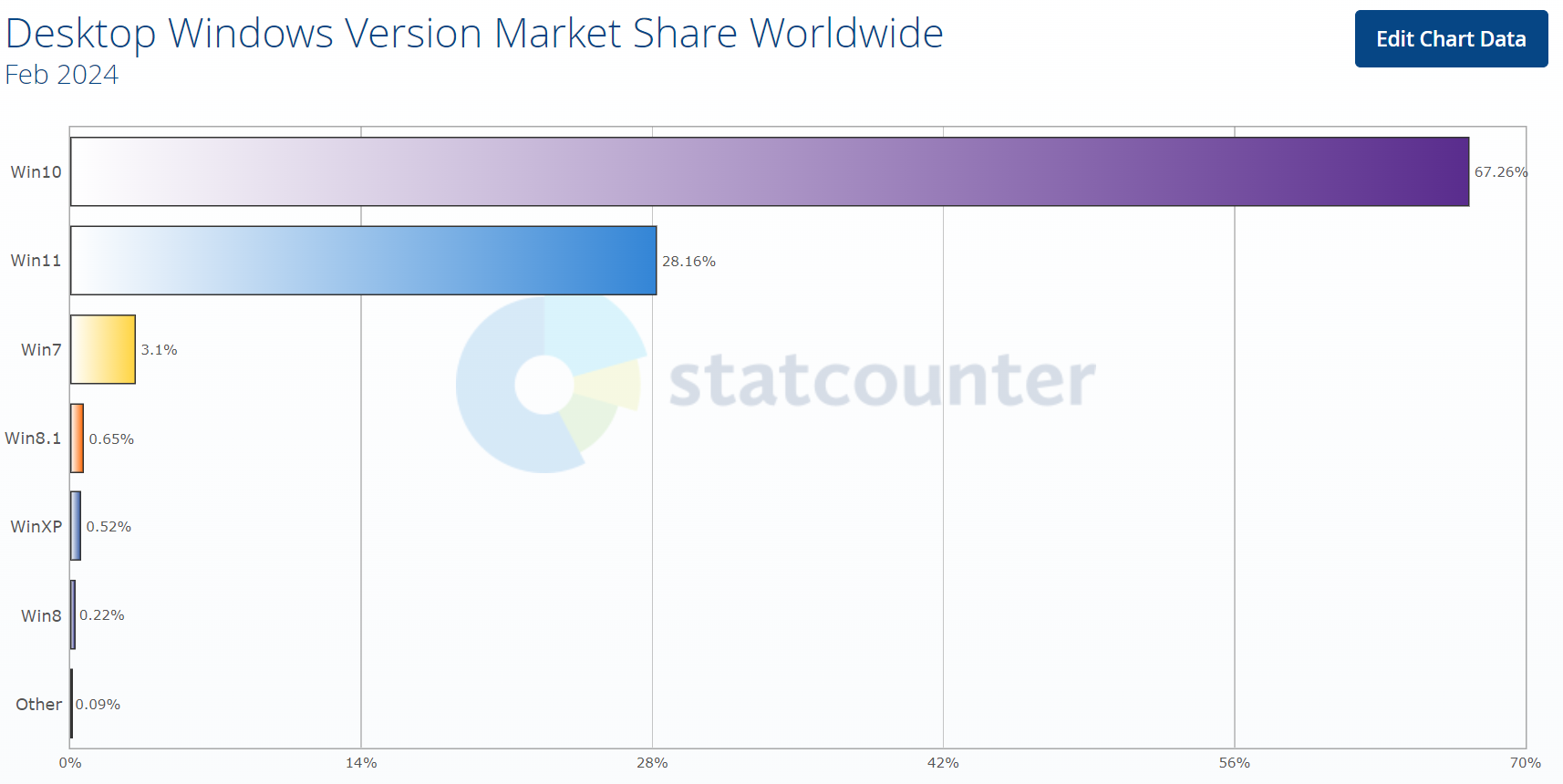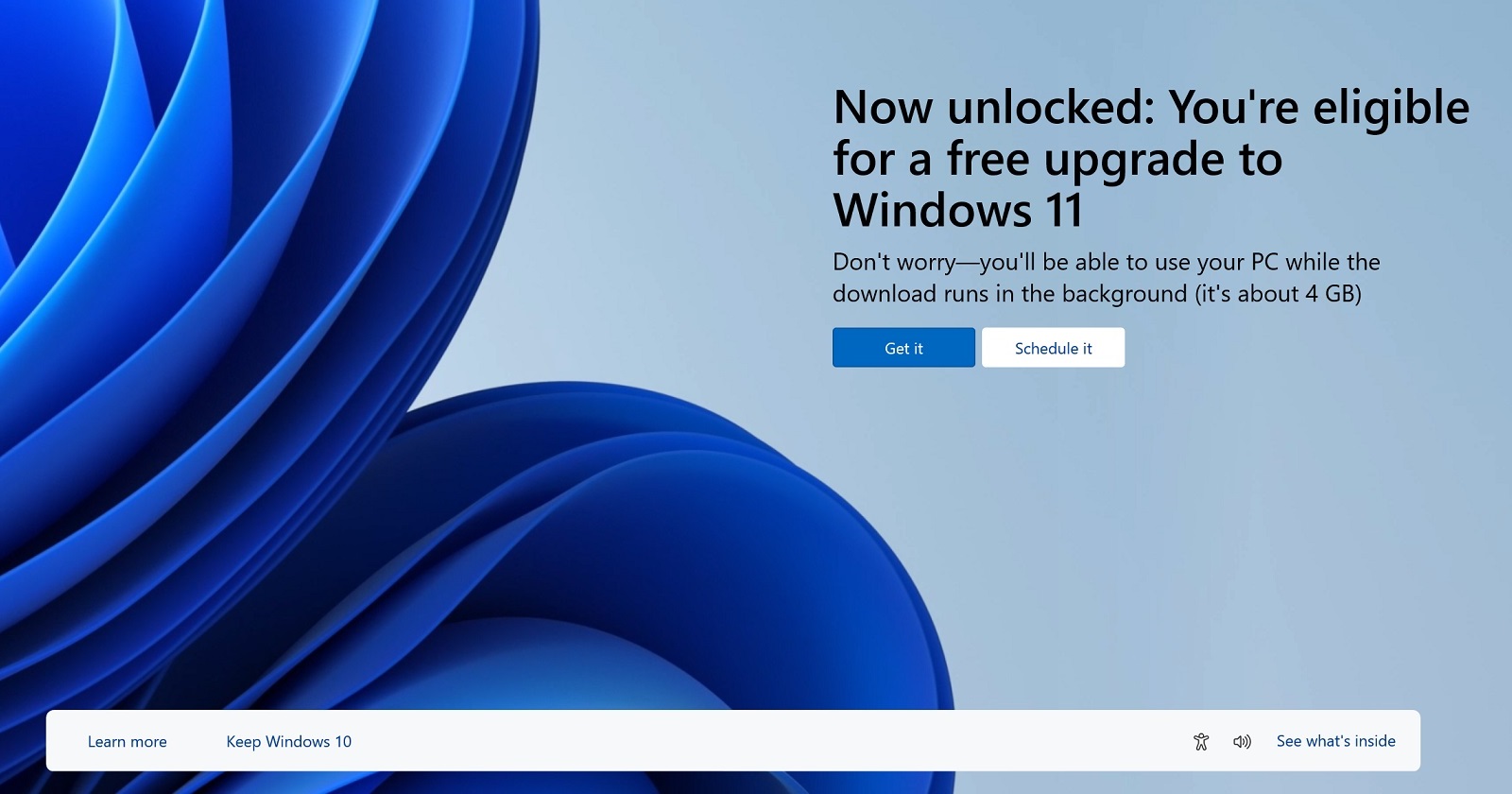Microsoft has already clarified its plans to end support for Windows 10 in 2025, and it’s just eighteen months before the operating system stops receiving updates and support. However, StatCounter’s report shows that Windows 10 gained almost 1% market share between January 2024 and February 2024.
Windows 10’s desktop market share climbed from 66.74% in January to 67.26% in February 2024. The current stats depict that users aren’t upgrading to Windows 11 as Microsoft thought they would, despite the End of Support (EOS) date announcement.
The stern hardware requirements are a major factor behind this slow transition, even after 2 and a half years of Windows 11 release. Windows 11 needs TPM 2.0, Secure Boot, and UEFI support, and older PCs lack in one or more of these three areas. So, it is a major obstruction to upgrading to Windows.

Tech-savvy users can modify the registry entries while clean installing Windows 11. Or, you can use Rufus to prepare a Windows 11 installation media that bypasses Secure Boot and TPM 2.0 requirements.
However, not all users are capable of tweaking the ISO file or registry to install Windows 11 on their unsupported PCs. They prefer to upgrade without resorting to clean installations and other such tricks. Meanwhile, some users stick to the old Windows operating system because they hate the adware, missing features, and instability of Windows 11.
Windows 11 upgrade pop-ups have begun reappearing on eligible Windows 10 devices. It displays a multi-page carousel touting the benefits of upgrading.

Microsoft is inviting more people to try Windows 11
Admins can upgrade the managed Windows PCs using Intune and enroll devices in Autopatch to upgrade to Windows 11. Even non-managed Windows PCs (Windows 10 Pro and Pro Workstation devices) will see the upgrade pop-ups after the April 2024 security update.
However, users aren’t happy with the announcement of giving control to users in a cloud-domain joined and domain-joined business devices to upgrade. Sticking to a specific operating system is an organization’s decision, and abrupt upgrades can hinder their workflow.
If you use a consumer edition of Windows 10, Microsoft offers to extend the support date for a fee. The price is not clear because Microsoft plans to reveal it when the EOS date is close. However, if you love Windows 10 that much, you can opt for the renewal program to continue getting security updates for up to three years.
The post Windows 10 is comfortably ahead of Windows 11, gaining nearly 1% market share appeared first on Windows Latest
